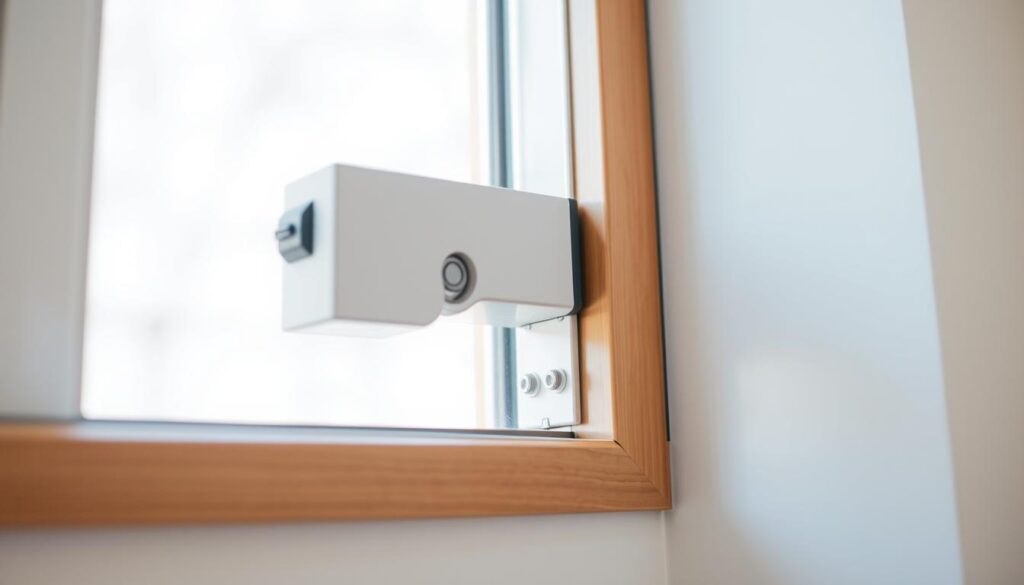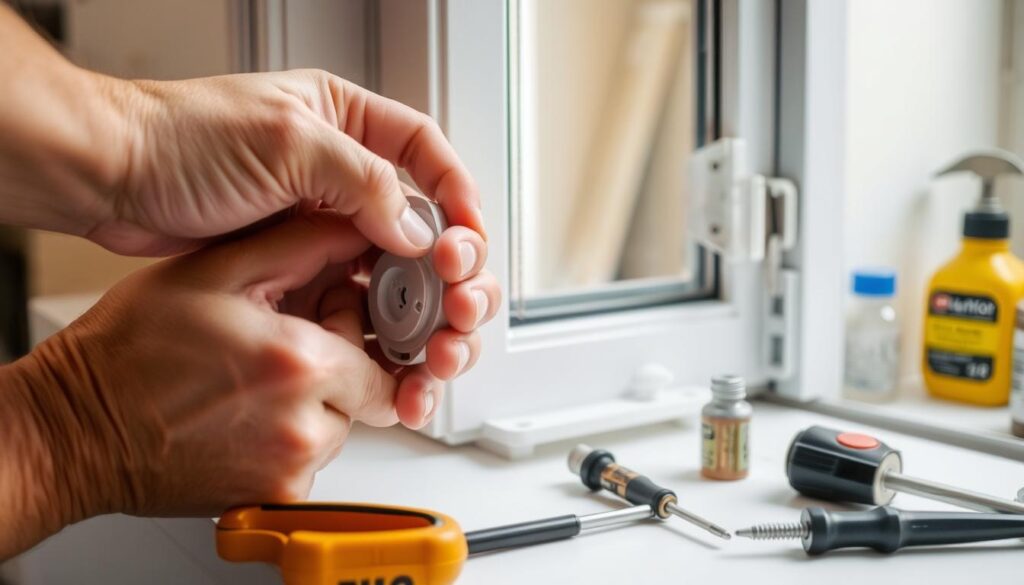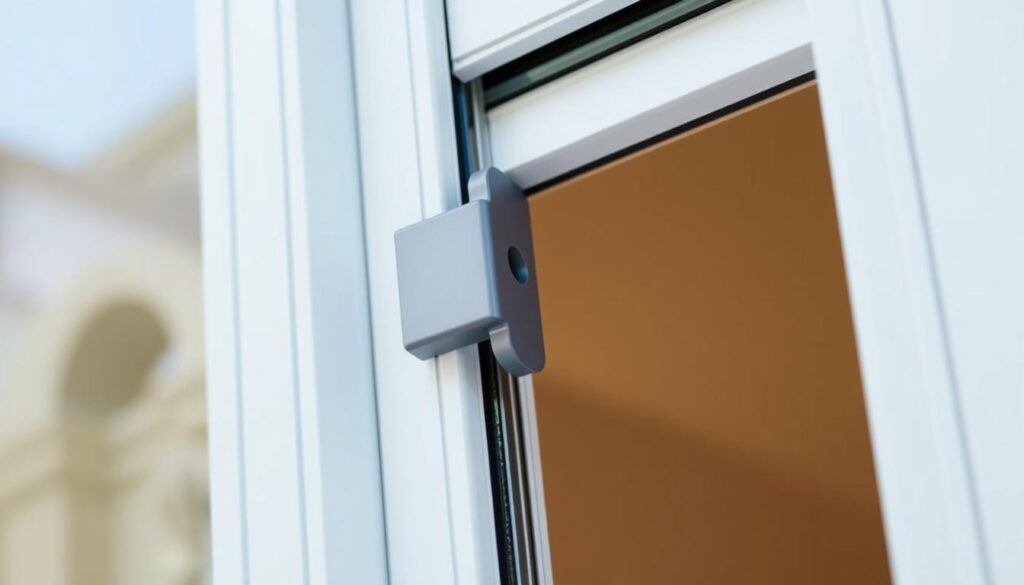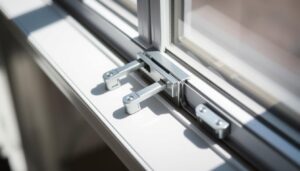Are you concerned about the safety of your loved ones, especially children and the elderly, when it comes to open windows in your home?
Window restrictors are a simple yet effective solution to enhance home safety and security. By limiting the opening of windows to 100mm, you can prevent falls and ensure your home remains secure while still allowing fresh air to circulate.
This is particularly crucial for upper-floor windows where falls can be fatal. Fitting a window restrictor is a relatively simple DIY task that can significantly improve home safety.
Key Takeaways
- Enhance home safety with window restrictors
- Prevent falls from windows, especially for children and the elderly
- Improve security while allowing ventilation
- Simple DIY installation for window restrictor fitting
- Compliance with building regulations through proper installation
Understanding Window Restrictors and Their Safety Benefits
Window restrictors are a crucial safety feature for homes, especially where children and vulnerable people are present. They are designed to limit the opening of windows, thus preventing accidental falls.
What Are Window Restrictors?
Window restrictors are devices fitted to windows to restrict how wide they can open. By limiting the opening to 100mm, you can ventilate your home while keeping your family safe.
Why Window Restrictors Are Essential for Home Safety
Window restrictors are essential for maintaining safety and security in your home. They prevent children and vulnerable individuals from falling out of windows and also act as a deterrent against intruders. Key benefits include:
- Preventing accidental falls, particularly among children and vulnerable individuals.
- Allowing for ventilation while maintaining safety.
- Enhancing security by limiting window opening.
- Being a standard practice in hotels, care homes, and healthcare facilities.
By installing window restrictors, you can ensure a safer home environment.

Choosing the Right Lockable Window Restrictors
To ensure your windows are safe and secure, it’s essential to pick the correct lockable window restrictors. The market offers various types, each with its unique features and benefits.
Types of Release Mechanisms
Lockable window restrictors come with different release mechanisms. Some require a key to unlock, while others use a simple release lever. Cable window restrictors, for instance, offer flexibility and can be used on various window types.
Material Quality and Safety Standards
The quality of materials used in window restrictors is crucial for their effectiveness. High-quality materials like high tensile stainless steel ensure durability and strength. Jackloc cable window restrictors, for example, are tested to withstand a force of 3,000 newtons, exceeding British Standards requirements.
Suitable Applications for Different Window Types
Different window types require specific window restrictors. Cable window restrictors are versatile and can be used on UPVC, timber, and aluminium windows. For sash windows, specific types like Angel Ventlocks might be necessary. It’s also important to consider the installation method, as it may vary depending on the window material.
When choosing window restrictors, consider the type of window you have and the level of security you need. Some restrictors are also suitable for use on doors.
How to Fit Lockable Window Restrictors: Step-by-Step Guide
Fitting lockable window restrictors is a straightforward process that can significantly enhance your home’s safety. By following these steps, you can ensure that your windows are secure and compliant with safety regulations.
Tools and Materials You’ll Need
To fit window restrictors, you’ll need a few basic tools and materials. These typically include a drill, screws, and the restrictor kit itself. Make sure you have everything on hand before starting the installation.
Preparing for Installation
Before you begin, it’s essential to prepare your window for the restrictor. This involves measuring the correct 100mm opening and marking the drill points.
Measuring the Correct 100mm Opening
To ensure the restrictor functions correctly, measure the window opening carefully. The restrictor should limit the window opening to 100mm.
Marking Drill Points
Once you’ve measured the opening, mark the points where you’ll need to drill. This step is crucial for a secure and proper fit.
Installing the Fixed Component (Part B)
The fixed component is a critical part of the restrictor. Attach it securely to the window frame, following the manufacturer’s instructions.
Installing the Cable Component (Part A)
After securing the fixed component, install the cable component. This part will be attached to the window sash and connected to the fixed component.
Testing Your Installation
After installation, it’s crucial to test the restrictor to ensure it’s working correctly. Check that the window opens no more than 100mm and that the locking mechanism (if applicable) is secure.
- Verify that the restrictor limits the window opening to 100mm.
- Test the locking mechanism to ensure it’s secure.
- Check that the restrictor can withstand reasonable force.
- Look for signs that might indicate improper installation, such as excessive play or looseness.
Thorough testing is vital for safety. If the restrictor doesn’t pass testing, you may need to reinstall or adjust it. Regular testing should be part of your maintenance routine to ensure ongoing safety.
Maintenance and Care for Window Restrictors
Proper care and maintenance of your window restrictors are vital for their longevity and performance. Regular maintenance ensures that they continue to provide the necessary safety benefits.
Regular Cleaning Procedures
To keep your window restrictors in good condition, clean them regularly with a soft cloth and mild detergent. This helps remove dirt and grime that could affect their operation.
Checking and Lubricating the Locking Mechanism
It’s essential to check the locking mechanism periodically and lubricate it as needed. Use a silicone-based lubricant to keep the mechanism running smoothly. This helps prevent wear and tear, ensuring your window restrictor remains effective.
When to Replace Your Window Restrictors
Inspect your window restrictors regularly for signs of wear or damage. If you notice any issues, or if the window frame is decaying, it’s time to replace them. High-quality models like the restrictor pro may have a longer lifespan, but safety should never be compromised. Replace old restrictors by carefully removing them and consider upgrading to newer models for enhanced safety.

Conclusion: Enhanced Safety Through Proper Installation
The installation of window restrictors is a simple yet effective measure to boost your home’s safety. By following our step-by-step guide, you can ensure that your windows are secure, particularly for children and vulnerable individuals. Properly installed window restrictors prevent serious accidents, providing you with peace of mind. It’s essential to check all windows in your home, not just those in children’s rooms, to ensure overall safety. Regular maintenance is also crucial to guarantee continued protection. Consider investing in professional models like the window restrictor pro for enhanced security features. By taking these steps, you can significantly enhance your home safety. Make window safety an ongoing commitment by periodically assessing your windows.



